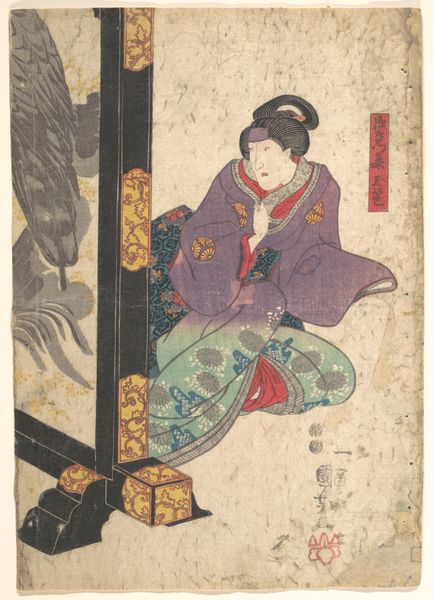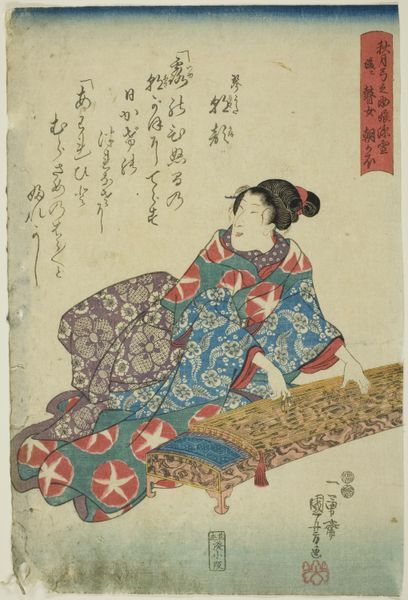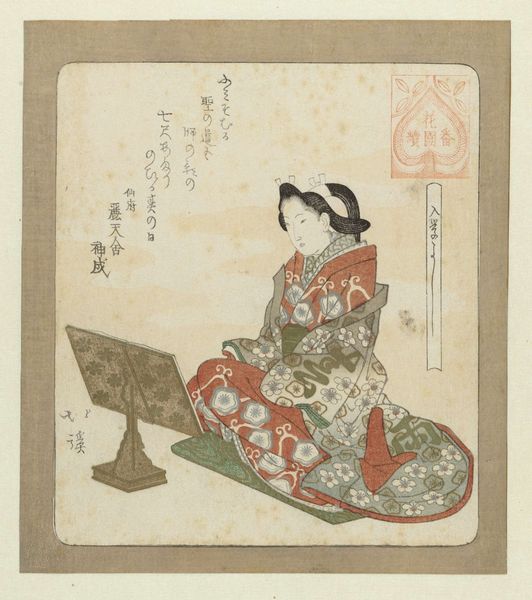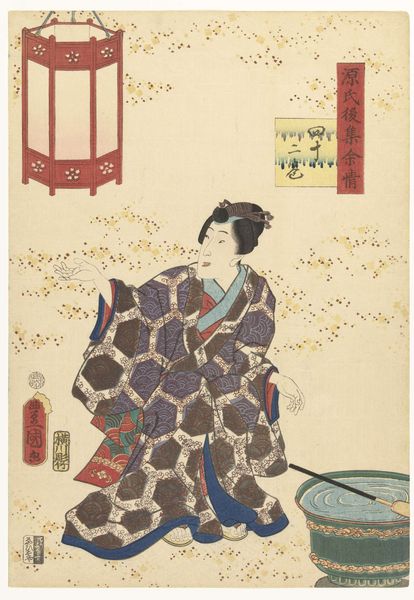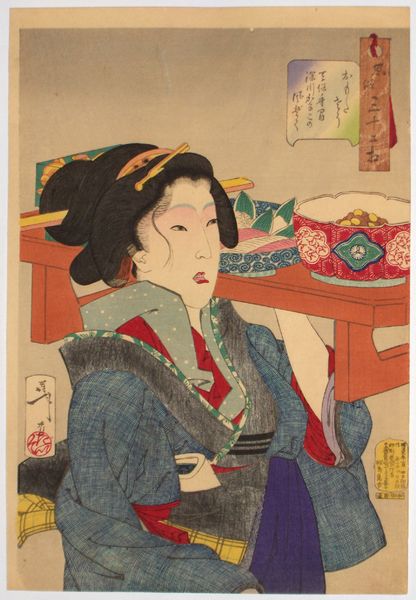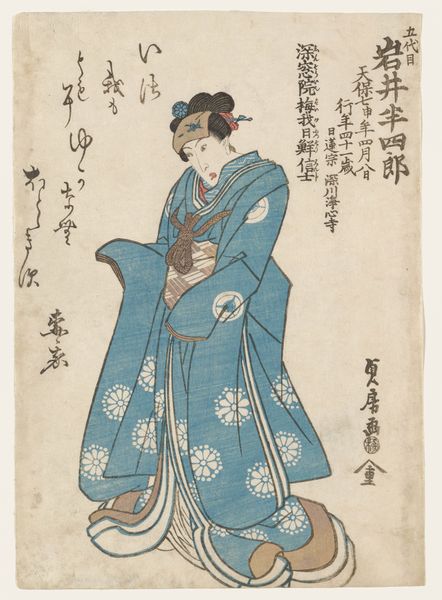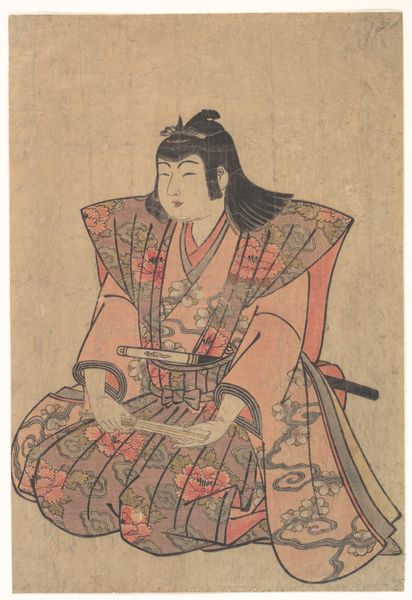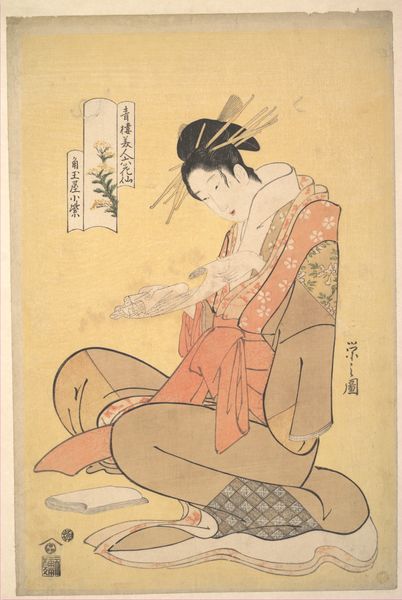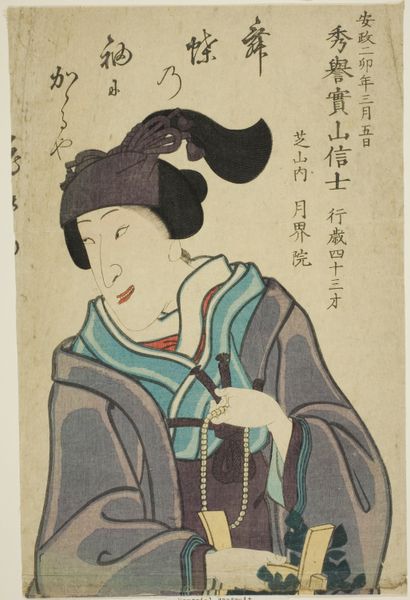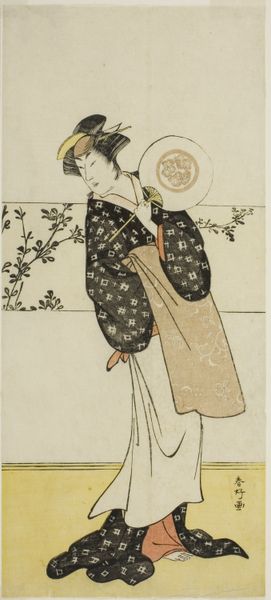
Hakoōmaru, Buyū chikara-gusa 1800 - 1861
0:00
0:00
print, woodblock-print
#
portrait
# print
#
asian-art
#
ukiyo-e
#
woodblock-print
Dimensions: Image: 13 5/8 × 9 5/8 in. (34.6 × 24.4 cm)
Copyright: Public Domain
Editor: Here we have Utagawa Kuniyoshi's woodblock print, "Hakōmaru, Buyū chikara-gusa," created sometime between 1800 and 1861. The figure's stance and intense gaze create a sense of contained power. How do you interpret this work in terms of its historical and social context? Curator: Well, let's consider ukiyo-e as a genre. These woodblock prints were accessible and widely distributed, often depicting popular heroes, kabuki actors, and tales of bravery. Kuniyoshi was active during a time of great social and political change. What can we glean from the figure's expression and clothing? The intense expression paired with what appears to be flamboyant attire seems indicative of a particular persona. Editor: I see. So, the clothing might tell us more about his character and role in society. What do you mean? Curator: Ukiyo-e prints served as cultural touchstones for their audiences, highlighting figures celebrated for challenging social norms or embodying admired values. In this image, the individual seems dressed in an ornate kimono and with a katana tucked into his obi sash. Hakomaru, which translates into something resembling the strength and power, so there are certainly stories and narratives woven in, celebrating the courage of people confronting corruption. Also, the inclusion of a small text panel can be read as direct engagement. In this way, art was political—always had been—especially to critique injustices, even during highly censored eras. How does knowing this shift your understanding of the artwork? Editor: It makes me realize that it goes beyond a simple portrait; it's making a statement about strength. Are the stances supposed to communicate? Curator: Absolutely, the pose is no accident. He is bracing, a defiant stand against social order. And do you see the circle design down at the bottom? I interpret that as a form of philosophical harmony with the turmoil of the moment. Does seeing it that way add to how you might describe this artwork today? Editor: It's amazing how much information can be packed into one image. Thanks. Curator: Agreed. Considering art through social and political contexts really unlocks powerful messages!
Comments
No comments
Be the first to comment and join the conversation on the ultimate creative platform.
